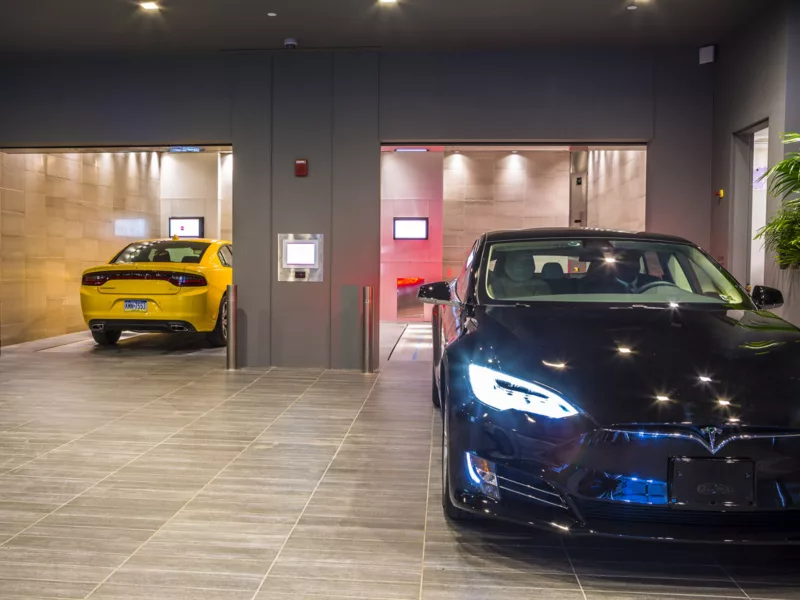
A Look into 2019 Industrial & Multi-Family Trends
By: Ian Todd, Director of Automated Parking Systems
The 19th annual ULI Philadelphia Real Estate Forecast brought together over 500 ULI members and real estate professionals to hear the perspectives of leading experts in the retail, hospitality, industrial, multi-family and office sectors. Here are some of the key takeaways from the program focused on a year of transformation.
1. Industrial trends
Bill Hankowsky, chairman, president & CEO of Liberty Property Trust noted that E-commerce has had the largest impact on the industrial sector. To quote him exactly, “E-commerce has been an unbelievable structural change element in terms of the industrial space. Ten years ago, most of us didn’t know we needed something delivered to our house in two days. Five years ago, you didn’t even know you needed it in a day, and you didn’t know three years ago you needed it today in an hour. That change in the customer consumer expectation about delivery times has had a dramatic fundamental effect on industrial space.”
Businesses need more space and storage for efficient distribution. Since the population has growing expectations of delivery times, not only has the need of warehouses increased but also their locations have come closer and closer to city limits. The ideal location now falls within the “last mile” or within the bounds of 80 percent of the urban population.
The design of warehouse buildings has also been affected by the rising demand for rapid delivery. Warehouses now tend to accommodate 40-foot heights for more efficient racking of stock, and tenants need more land under the buildings because of the increased need for employee parking at large distribution centers.
2. Multi-Family trends
Doug Yearley, chairman & CEO of Toll Brothers shifted the focus to multi-family trends. Yearley stated that urban lifestyle amenities have been prominent in multi-family development both in and outside of cities. Millennials and baby-boomers are looking for walkability, community and recreational activities. Everything from indoor pools and business centers to yoga studios, movie theaters and bars have become integral to the success of many multi-family projects.
Philadelphia is no stranger to luxurious amenities – Take 500 Walnut (located at the corner of 5th and Walnut) for example. The 26-story tower in Philadelphia features 35 condominium residences and an impressive list of high-end amenities (such as a state-of-the-art 86-space automated parking system located in the building’s basement). Opened in early 2018, 500 Walnut was the first project in the United States to utilize Westfalia’s new palletless parking system that collects vehicles directly from the two basement levels of concrete floor, allowing a high throughput when compared with pallet-based parking systems.
3. Local trends
Lauren Gilchrist, senior vice president of Research for JLL Philadelphia then took the stage at the event. Gilchrist summarized the region’s strong population growth, in particular of millennials and highly educated individuals, and provided robust data in each asset class. “2018 was a record year for commercial real estate construction in Philadelphia, and the leasing market has demonstrated strength across most asset classes,” Gilchrist explained. “As the construction cycle winds down and some cracks begin to show in the national economy, questions about how much more time we have in this cycle have begun to emerge. But for now, the market in Philadelphia remains robust, and we predict a strong first half of 2019.”
4. National trends
Mitch Roschelle, partner and business development leader for PricewaterhouseCoopers completed the event by highlighting that interest rates, regulations, global financial crisis, securitization, urbanization and technology are all major factors on the national level. Demographic shifts, smoother economic cycles and climate change are also playing a part. When trade assets are dry, property remains a good asset and people are generally optimistic about profitability. His key takeaway was to keep your eye on the disruptors. Technology is changing real estate. Environmental, Social and Governance Practices are also much more relevant to investors and can offer meaningful advantages.
Emerging Trends in Real Estate® is a trends and forecast publication now in its 40th edition and is one of the most highly regarded and widely read forecast reports in the real estate industry. Emerging Trends in Real Estate® 2019, undertaken jointly by PwC and the Urban Land Institute, provides an outlook on real estate investment and development trends, real estate finance and capital markets, property sectors, metropolitan areas, and other real estate issues throughout the United States and Canada.
